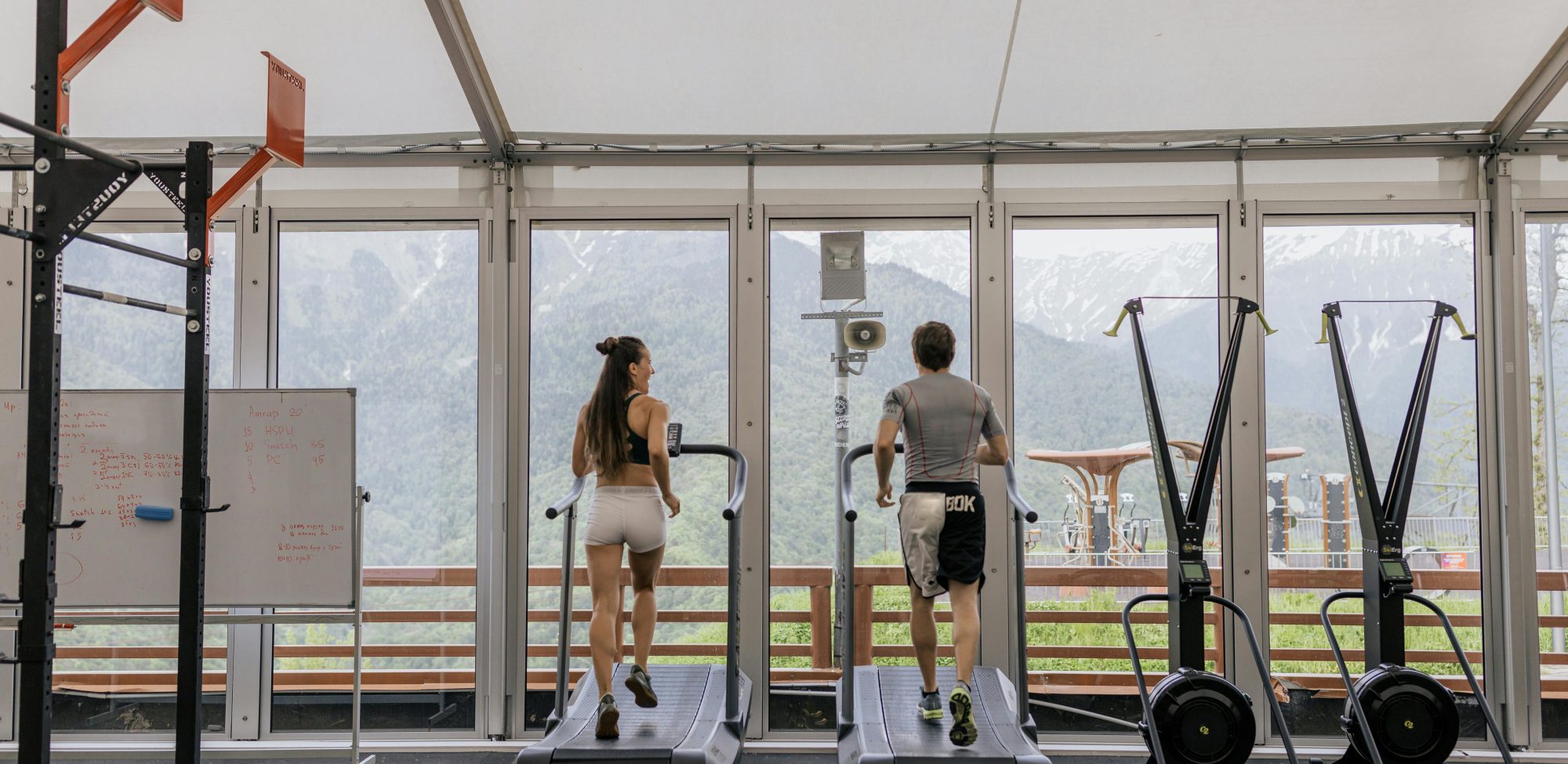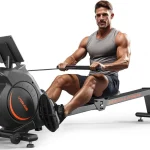Cardiovascular Exercise: Transform Your Health and Unlock Your Best Self – The Ultimate Guide to Fitness Success

Cardiovascular Exercise: Transform Your Health and Unlock Your Best Self The Ultimate Guide to Fitness Success.
Imagine waking up each morning feeling energized, confident, and ready to conquer whatever challenges life throws your way. This isn’t just a dream – it’s the reality that awaits when you embrace the transformative power of cardiovascular exercise. In our increasingly sedentary world, where desk jobs dominate and screens capture our attention, the need for purposeful movement has never been more critical.
This comprehensive guide will take you on a journey through the remarkable world of cardiovascular exercise, revealing how this powerful form of physical activity can revolutionize not just your body, but your entire quality of life. Whether you’re taking your first steps toward fitness or looking to elevate your existing routine, you’ll discover evidence-based strategies, practical tips, and inspiring insights that will help you harness the full potential of cardiovascular training.

The Science Behind Cardiovascular Exercise: Why Your Heart Deserves the Best
Understanding Your Cardiovascular System
Your heart is an incredible muscle that beats approximately 100,000 times per day, pumping life-sustaining blood throughout your body. When you engage in cardiovascular exercise, you’re essentially giving your heart a workout, strengthening it and improving its efficiency. This enhanced cardiac function creates a cascade of positive effects that ripple through every aspect of your health.
Recent research published in leading medical journals consistently demonstrates that individuals who maintain regular cardiovascular exercise routines experience significantly lower rates of heart disease, stroke, and premature death. The American Heart Association emphasizes that even moderate amounts of cardiovascular activity can reduce your risk of cardiovascular disease by up to 35%.
The Physiological Marvel of Cardio Training
During cardiovascular exercise, your body undergoes remarkable adaptations. Your heart rate increases, blood vessels dilate, and oxygen delivery to muscles improves dramatically. This process, known as cardiovascular conditioning, leads to lasting improvements in your body’s ability to transport and utilize oxygen efficiently.
The beauty of cardiovascular exercise lies in its ability to create positive stress on your system. This controlled stress stimulates adaptations that make your heart stronger, your lungs more efficient, and your blood vessels more flexible. Over time, these adaptations translate into improved endurance, better energy levels, and enhanced overall health.
Life-Changing Benefits: How Cardiovascular Exercise Transforms Your World
Heart Health and Longevity: Your Ticket to a Longer Life
The most profound benefit of cardiovascular exercise is its impact on heart health. Regular participation in cardio activities strengthens your heart muscle, enabling it to pump blood more efficiently with each beat. This improved efficiency means your heart doesn’t have to work as hard during daily activities, reducing wear and tear over time.
Studies tracking participants over decades reveal that those who engage in consistent cardiovascular exercise enjoy not only longer lives but also more years of healthy, active living. The concept of “healthspan” – the number of years you live in good health – is dramatically extended through regular cardio training.
Weight Management: Achieving and Maintaining Your Ideal Body
Cardiovascular exercise serves as a powerful tool for weight management, burning calories both during and after your workout sessions. The “afterburn effect,” scientifically known as excess post-exercise oxygen consumption (EPOC), means your body continues burning calories at an elevated rate for hours after you finish exercising.
Beyond immediate calorie burn, cardiovascular exercise improves your body’s insulin sensitivity, enhancing your ability to process carbohydrates efficiently and reducing the likelihood of fat storage. This metabolic enhancement makes it easier to maintain a healthy weight long-term.
Mental Health Revolution: The Mood-Boosting Power of Movement
Perhaps one of the most underestimated benefits of cardiovascular exercise is its profound impact on mental health. During cardio sessions, your brain releases a cocktail of feel-good chemicals, including endorphins, serotonin, and dopamine. These natural mood elevators create what many call the “runner’s high,” but the benefits extend far beyond the immediate post-workout glow.
Regular cardiovascular exercise has been shown to be as effective as some medications in treating mild to moderate depression and anxiety. The rhythmic, repetitive nature of many cardio activities also provides a form of moving meditation, helping to clear mental clutter and reduce stress levels.
Cognitive Enhancement: Sharper Mind Through Movement
Emerging research reveals that cardiovascular exercise literally changes the structure of your brain. Aerobic activity increases the production of brain-derived neurotrophic factor (BDNF), a protein that promotes the growth of new brain cells and strengthens existing neural connections.
Regular cardio participants show improved memory, enhanced focus, and better decision-making abilities. The increased blood flow to the brain during exercise delivers oxygen and nutrients that support optimal cognitive function, making cardiovascular exercise a powerful tool for maintaining mental sharpness throughout life.
Diverse Cardio Options: Finding Your Perfect Movement Match
Running and Jogging: The Classic Cardio Champion
Running remains one of the most accessible and effective forms of cardiovascular exercise. Whether you prefer the controlled environment of a treadmill or the ever-changing scenery of outdoor routes, running offers unparalleled convenience and effectiveness.
The beauty of running lies in its adaptability. Beginners can start with gentle jogging intervals, while experienced athletes can challenge themselves with speed work, hill training, or long-distance runs. This versatility makes running a sustainable form of cardiovascular exercise that can grow with your fitness level.
Swimming: The Full-Body Cardio Experience
Swimming stands out as perhaps the most complete form of cardiovascular exercise available. This low-impact activity engages virtually every muscle group while providing an excellent cardiovascular workout. The buoyancy of water reduces stress on joints, making swimming an ideal choice for individuals with arthritis, injuries, or weight concerns.
The resistance provided by water creates a unique training environment where every movement becomes a strength-building exercise. This dual benefit of cardiovascular conditioning and muscle strengthening makes swimming an incredibly efficient use of exercise time.
Cycling: Pedaling Your Way to Better Health
Cycling offers an excellent cardiovascular workout while being gentle on the joints. Whether you choose outdoor cycling for the fresh air and scenery or indoor cycling for convenience and climate control, this form of exercise provides exceptional cardiovascular benefits.
The seated position of cycling makes it accessible to individuals who may have difficulty with weight-bearing exercises. Additionally, cycling can easily be incorporated into daily life as a mode of transportation, making it a practical choice for busy schedules.
High-Intensity Interval Training (HIIT): Maximum Results in Minimum Time
For those seeking maximum cardiovascular benefits in limited time, High-Intensity Interval Training represents the cutting edge of exercise science. HIIT involves alternating periods of intense effort with recovery periods, creating a workout that continues burning calories long after completion.
Research demonstrates that HIIT can provide similar or superior cardiovascular benefits to traditional steady-state cardio in significantly less time. This time-efficient approach to cardiovascular exercise makes it perfect for busy professionals and parents who struggle to find extended workout windows.
Creating Your Cardiovascular Exercise Success Plan
Setting Realistic and Inspiring Goals
Success in cardiovascular exercise begins with setting goals that are both challenging and achievable. Rather than aiming for dramatic overnight changes, focus on progressive improvements that build momentum over time. Start with modest goals like walking for 20 minutes daily, then gradually increase duration and intensity as your fitness improves.
Effective goal-setting involves creating both short-term milestones and long-term visions. Short-term goals might include completing your first 5K run or cycling for 30 minutes without stopping. Long-term visions could involve participating in a marathon, completing a triathlon, or simply maintaining an active lifestyle well into your golden years.
Designing Your Weekly Cardio Schedule
A well-structured cardiovascular exercise routine balances consistency with variety. The American College of Sports Medicine recommends at least 150 minutes of moderate-intensity cardio or 75 minutes of vigorous-intensity cardio per week, spread across multiple days.
Consider creating a weekly schedule that incorporates different types of cardiovascular exercise. For example, you might run on Mondays and Thursdays, swim on Tuesdays, cycle on Fridays, and take a dance class on Saturdays. This variety prevents boredom, reduces injury risk, and ensures comprehensive fitness development.
Tracking Progress and Staying Motivated
Monitoring your cardiovascular exercise progress serves multiple purposes: it provides objective feedback on improvements, helps identify areas needing attention, and maintains motivation during challenging periods. Modern technology offers numerous tools for tracking, from smartphone apps to advanced fitness wearables.
Beyond numbers and statistics, pay attention to how cardiovascular exercise makes you feel. Notice improvements in energy levels, mood, sleep quality, and overall well-being. These subjective measures often provide the most compelling motivation to maintain your routine.
Essential Equipment for Maximizing Your Cardio Success
Home Gym Essentials: Bringing the Workout to You
While cardiovascular exercise can be performed with minimal equipment, investing in quality home fitness equipment can dramatically enhance your workout experience and results. A well-equipped home gym eliminates weather-related excuses, saves commute time, and provides the privacy that some people prefer.

Featured Product: NordicTrack Commercial 1750 Treadmill
For those serious about establishing a comprehensive home cardiovascular exercise routine, the NordicTrack Commercial 1750 Treadmill represents an exceptional investment in your health and fitness future. This professional-grade treadmill offers features that rival commercial gym equipment while providing the convenience of home workouts.
Key Features That Set This Treadmill Apart:
- Powerful 3.75 CHP Motor: Delivers smooth, consistent performance for running, jogging, or walking
- Interactive 14″ HD Touchscreen: Provides access to thousands of on-demand workouts and scenic routes worldwide
- Incline and Decline Capability: -3% to 15% grade adjustment for varied terrain simulation
- Advanced Cushioning System: Reduces impact on joints by up to 32% compared to running on asphalt
- iFit Integration: Offers personalized training programs and virtual coaching
- Spacious Running Surface: 22″ x 60″ belt accommodates users of all sizes and running styles
The NordicTrack Commercial 1750 transforms your cardiovascular exercise routine by providing professional-level features in your home environment. The iFit integration offers access to expert trainers who guide you through diverse workouts, ensuring you never get bored with your routine.
Why This Investment Makes Sense:
The convenience of having a high-quality treadmill at home eliminates common barriers to consistent cardiovascular exercise. Weather conditions, gym hours, and travel time no longer impact your ability to maintain your fitness routine. The variety of programs available through iFit ensures your workouts remain challenging and engaging as your fitness level improves.
Available on Amazon with competitive pricing and excellent customer reviews, the NordicTrack Commercial 1750 represents a long-term investment in your health that pays dividends in improved fitness, energy, and overall well-being.
Complementary Equipment for Comprehensive Training
Beyond a quality treadmill, consider these additional pieces of equipment to create a complete home cardiovascular exercise environment:
Heart Rate Monitors: Essential for ensuring you’re training in the optimal heart rate zones for your fitness goals. Modern monitors sync with smartphones and fitness apps for comprehensive tracking.
Resistance Bands: Lightweight and versatile, these allow for strength training that complements your cardiovascular exercise routine.
Foam Rollers: Critical for recovery and injury prevention, helping maintain the flexibility and muscle health necessary for consistent cardio training.
Quality Athletic Shoes: Perhaps the most important investment for any cardiovascular exercise routine, proper footwear prevents injuries and enhances performance.
Advanced Strategies for Cardiovascular Exercise Excellence
Periodization: The Science of Strategic Training
Advanced practitioners of cardiovascular exercise use periodization principles to optimize their training. This approach involves systematically varying training intensity, volume, and type over specific time periods to maximize adaptations while preventing burnout and overuse injuries.
A typical periodization plan might include base-building phases focused on longer, moderate-intensity sessions, followed by intensity phases incorporating interval training and speed work. Recovery phases allow for adaptation and prevent overtraining, ensuring long-term progress in your cardiovascular exercise journey.
Heart Rate Zone Training: Precision Cardio for Maximum Results
Understanding and utilizing heart rate zones transforms cardiovascular exercise from a general activity into a precise training tool. Different heart rate zones target specific physiological adaptations, allowing you to tailor your workouts to achieve particular goals.
Zone 1 (50-60% Max HR): Active recovery and base building Zone 2 (60-70% Max HR): Aerobic base development and fat burning Zone 3 (70-80% Max HR): Aerobic capacity improvement Zone 4 (80-90% Max HR): Lactate threshold training Zone 5 (90-100% Max HR): Neuromuscular power development
By incorporating training across multiple zones, you develop a complete cardiovascular profile that supports both daily activities and athletic performance.
Cross-Training: The Balanced Approach to Cardio Fitness
Cross-training involves combining different types of cardiovascular exercise to create a more complete fitness program. This approach reduces injury risk, prevents boredom, and develops well-rounded fitness that transfers to various activities.
A cross-training program might combine running for cardiovascular endurance, swimming for full-body conditioning, cycling for leg strength, and rowing for upper body development. This variety ensures balanced muscle development and reduces the repetitive stress that can lead to overuse injuries.
Nutrition and Recovery: The Foundation of Cardio Success
Fueling Your Cardiovascular Exercise Performance
Proper nutrition plays a crucial role in maximizing the benefits of cardiovascular exercise. Pre-workout nutrition should provide easily digestible carbohydrates for energy, while post-workout nutrition should focus on replenishing glycogen stores and supporting muscle recovery.
Hydration deserves special attention in cardiovascular exercise, as even mild dehydration can significantly impact performance and increase injury risk. Develop a hydration strategy that includes pre-exercise hydration, fluid replacement during longer sessions, and post-exercise rehydration.
Recovery: The Often-Overlooked Component of Fitness
Recovery is when your body adapts to the stress of cardiovascular exercise, becoming stronger and more efficient. Adequate sleep, stress management, and active recovery sessions are crucial components of any successful cardio program.
Active recovery might include gentle walking, easy swimming, or restorative yoga. These activities promote blood flow and muscle recovery without adding significant stress to your system. Regular massage, foam rolling, and stretching also support the recovery process.
Overcoming Common Cardiovascular Exercise Challenges
Time Constraints: Making Every Minute Count
The most common barrier to consistent cardiovascular exercise is the perception of time constraints. However, research demonstrates that even short bursts of activity provide significant health benefits. High-intensity interval training can deliver impressive results in as little as 15-20 minutes.
Consider incorporating cardiovascular exercise into your daily routine through active commuting, taking stairs instead of elevators, or scheduling walking meetings. These small changes accumulate significant health benefits over time.
Motivation and Consistency: Building Lasting Habits
Maintaining motivation for cardiovascular exercise requires strategies that address both the physical and psychological aspects of behavior change. Setting process goals (focusing on behaviors) rather than outcome goals (focusing on results) often proves more sustainable.
Creating accountability through workout partners, fitness communities, or professional trainers can provide the external motivation needed during challenging periods. Many people find that joining running groups, cycling clubs, or fitness classes creates social connections that make exercise more enjoyable and sustainable.
Injury Prevention: Staying Healthy for the Long Haul
Preventing injuries is crucial for maintaining a consistent cardiovascular exercise routine. Most cardio-related injuries result from too much, too soon, or poor biomechanics. Gradual progression, proper warm-up and cool-down routines, and attention to form are essential for injury prevention.
Listen to your body and distinguish between normal exercise discomfort and pain that signals potential injury. When in doubt, err on the side of caution and consult with healthcare professionals or qualified fitness instructors.
The Future of Cardiovascular Exercise: Technology and Innovation
Wearable Technology: Your Personal Fitness Coach
Modern wearable devices have revolutionized how we approach cardiovascular exercise. These sophisticated tools provide real-time feedback on heart rate, pace, distance, and calories burned, allowing for precise training adjustments.
Advanced wearables also track recovery metrics like heart rate variability and sleep quality, providing insights into when your body is ready for intense training versus when it needs recovery. This data-driven approach optimizes training effectiveness while reducing injury risk.
Virtual Reality and Immersive Experiences
Virtual reality technology is beginning to transform cardiovascular exercise by creating immersive experiences that make workouts more engaging and enjoyable. VR cycling adventures, virtual running trails, and gamified fitness experiences represent the future of home-based cardio training.
These technologies address one of the primary challenges of cardiovascular exercise – maintaining long-term motivation and engagement. By making workouts feel more like entertainment than exercise, VR and similar technologies may help more people adopt and maintain active lifestyles.
Building a Sustainable Cardiovascular Exercise Lifestyle
Long-Term Perspective: Marathon, Not Sprint
Success in cardiovascular exercise requires adopting a long-term perspective. Rather than seeking quick fixes or dramatic short-term changes, focus on building sustainable habits that can be maintained for years or decades.
This long-term approach means accepting that progress may be gradual and that setbacks are normal parts of the journey. Consistency over perfection should be your guiding principle, as small, regular efforts compound into remarkable results over time.
Adapting to Life Changes
A sustainable cardiovascular exercise routine must be flexible enough to adapt to life’s inevitable changes. Career transitions, family responsibilities, health challenges, and aging all require adjustments to your fitness approach.
Successful long-term practitioners develop multiple backup plans and alternative activities that allow them to maintain their commitment to cardiovascular exercise regardless of circumstances. This might mean having both indoor and outdoor options, short and long workout alternatives, and low and high-intensity variations.

Conclusion: Your Cardiovascular Exercise Journey Begins Now
The path to optimal health and vitality through cardiovascular exercise is both a science and an art. While the scientific evidence overwhelmingly supports the benefits of regular cardio activity, the art lies in finding the specific combination of activities, intensities, and schedules that work for your unique life circumstances.
Remember that every step, pedal stroke, and swimming lap contributes to your overall health and well-being. The cardiovascular exercise journey is not about achieving perfection but about making consistent progress toward becoming the healthiest version of yourself.
Whether you’re lacing up your running shoes for the first time in years, investing in quality home fitness equipment like the NordicTrack Commercial 1750 Treadmill, or refining an already established routine, you’re making an investment in your future self. The benefits of cardiovascular exercise extend far beyond physical fitness, touching every aspect of your life from mental clarity to emotional resilience.
Your heart, mind, and body are ready for transformation. The only question remaining is: are you ready to take the first step? Your cardiovascular exercise journey awaits, and with each beat of your heart, you’re moving closer to the vibrant, energetic life you deserve.
Start today, stay consistent, and watch as cardiovascular exercise transforms not just your body, but your entire life experience. The best version of yourself is just a heartbeat away.

